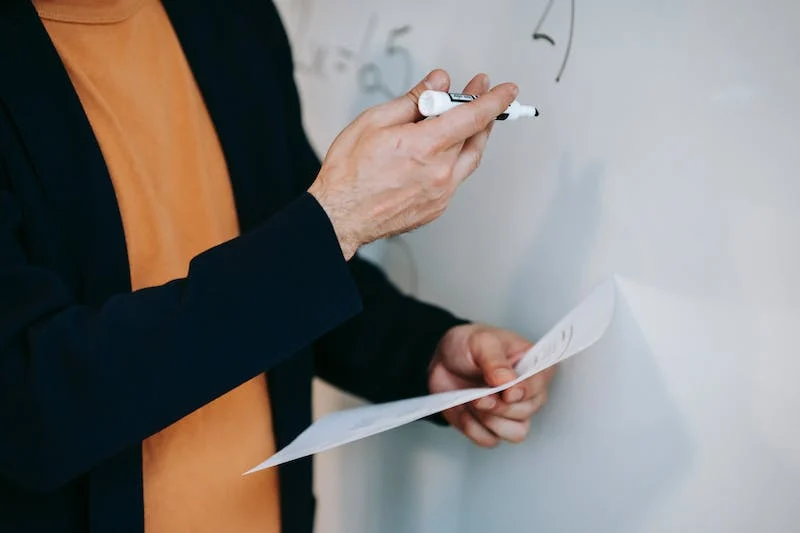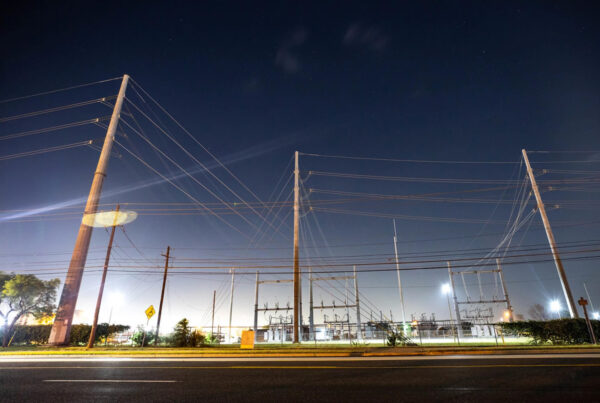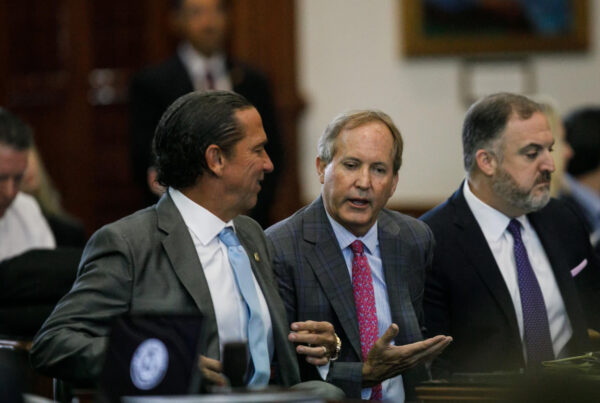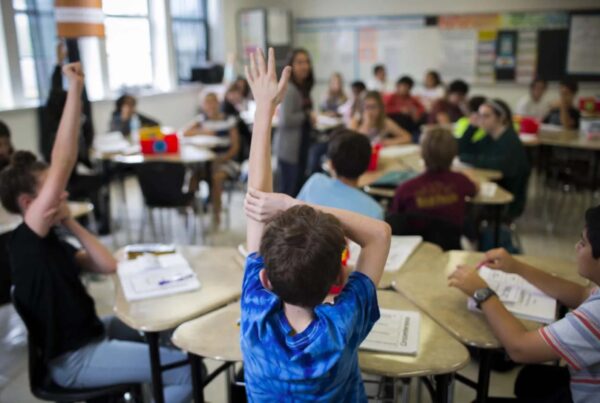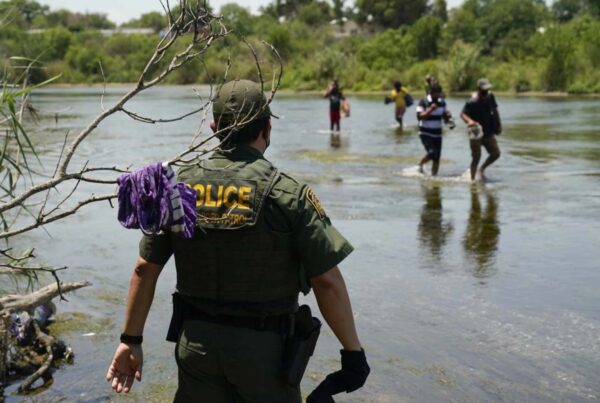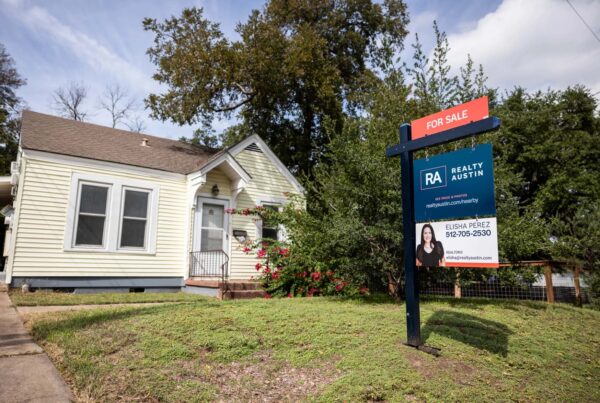In the early 2000s, Texas was dealing with a problem that’s become all too familiar today: teacher shortages.
One of the ways the state’s education agencies thought to address this was by lowering the educational requirements needed to become a licensed teacher.
Traditionally, people in Texas have gained their credentials for teaching through four-year universities or alternative certification programs. After the new rules went into effect, those alternative certification programs took less time to complete, making them more attractive for people looking to enter the profession.
Today, the majority of teachers starting their careers in the Lone Star State are alternatively licensed, according to new research co-authored by Sarah Guthery, an associate professor of educational administration at the University of Oklahoma.
She joined Texas Standard to talk about why policymakers lowered the barrier to teaching and how it has impacted teacher pay. Listen to the interview above or read the transcript below.
This transcript has been edited lightly for clarity:
Texas Standard: Your research mentions that in the 2000s, Texas made it easier to become a teacher. Can you tell us a little bit about the thinking behind that decision?
Sarah Guthery: At the time, Texas, like most states, had persistent teacher shortage in several areas of education, including math, computers, science, teachers of foreign language and bilingual. And there had long been a prevailing thought that traditional schools of higher education were actually the bottleneck. And if we could just make teachers faster and ideally cheaper, we would not have this shortage.
Well, after the rule changes, alternative licensing programs took off as a way of entering the teaching profession. Why are fewer people choosing to become teachers through traditional four year degrees? I presume because these alternative programs are easier.
I would definitely say quicker and less expensive. The new licensing programs are allowed to be standalone entities so they can be online for profit even through a district. And then finally, traditional schools of higher ed started creating their own as well.
Now, your research suggests that these changes had an effect on teacher pay in Texas. Can you say more about that?
So we’ve looked at what happened over time as districts who switched to hiring more alternatively certified teachers started paying less. And we found that districts which hire the most alternatively certified new teachers do pay about 13% less for new teachers, and they also end up hiring about 30% more new teachers than the districts in the lowest quartile of hiring alternatively licensed teachers.
So we’re now two decades past this initial change, and it’s my understanding that roughly half of all new teachers are alternatively licensed. Has this had any measurable impact on student performance?
That’s a great question. That is one that’s hard to disentangle because alternatively licensed teachers do tend to get hired in the most challenging context. And so it’s hard to disentangle. Is it people who are going into that or the context in which they’re going into or the training or lack thereof they received on the way?
I want to read one of the findings from your research: “Alternative licensure has also increased some dimensions of diversity in the teaching field.” Could you say more about that?
Yeah. So other studies have found that when states increase barriers to licensure, they actually decrease the diversity in their field and the new teachers coming in. And our study finds the opposite: that by making the teaching license more accessible, easier to obtain and cheaper, that there is an increase in diversity in who obtains that license, which is a good thing.
Well, what do you think accounts for that discrepancy?
I would say in general, we know that there’s some sorting that goes on for people who are traditionally performing lower on standardized tests, which do happen to be minority candidates. Also, we know that the alternative licensure programs just in general are more appealing to men, which at a time when education is predominantly staffed by women, increasing the number of men in the field is also a really desirable thing.
Now, something that we should address directly is the fact that here in Texas, certainly we have large teacher shortages right now. What impact do you think changing the requirements for licensing teachers has had on the problem that we currently see today? Would it have been a whole lot worse if these programs had not been instituted or how do you see it?
Well, in many ways we’re back to where we started. However, we’ve learned some really important lessons along the way, and this study does illustrate that just focusing on the point of production and making new teachers has not addressed the area of shortage.
But we have illustrated that the manipulation of policies do have an impact on how many people are becoming a teacher. But we’ve also illustrated that really it’s not the traditional schools of education that are the bottleneck in attracting people.
What is?
Well, that’s a great question. And I mean, in some ways, I almost might argue that we’re a little bit worse off after this policy because we did produce thousands of newly licensed people who did want to be a teacher, who did get a job in school and show up and now they’ve left the profession and Texas is still left with the same teacher shortage in the same areas that we’ve been reporting since the 1990s.
So the issue has shifted perhaps from one of recruitment to one of retention. Do I understand you saying that?
I would say that while I can’t say the policy solution, I can say from what we’ve learned, experimenting with policies on production, that that alone we have not been able to make enough teachers. We do have higher turnover in alternatively licensed teachers, and so districts which have shifted heavily to hiring alternatively licensed teachers are hiring more and more new teachers every year at less pay.
I know that finding a solution to the issue of teacher shortage was really beyond the scope of your research. But you’ve been studying this for some time. What is your sense of why this is happening and what solutions might be available for policymakers?
I would say, in my opinion, drawing people to the profession, we’ve now proven through this policy is possible and there are thousands of people who are willing to be a teacher. However, sometime between the point of licensure and their first few years on the job, it becomes untenable.
And so I think policy and research would benefit from focusing on that point where we’re losing the people who really wanted to be there from the schools who really needed them.
I’m just going to say it out loud: teacher pay?
That would be my next policy trial, if I had to suggest one. I don’t think it would hurt to try and see that as a possible policy solution.
Well, is it possible that when a teacher enters the profession that a confluence of how school settings have changed, having perhaps a lack of support as more and more teachers do leave the profession, whether it all sort of combines into a sort of perfect storm for public schools?
Yeah, I think you summarized it nicely.
It’s without a doubt one of the most challenging times to be in education for a variety of reasons and at the same time to have pay falling and really challenging curriculum in math and science and other STEM fields to stay competitive, we’re demanding a higher skill set that we need from teachers. And just the three are not meshing.


